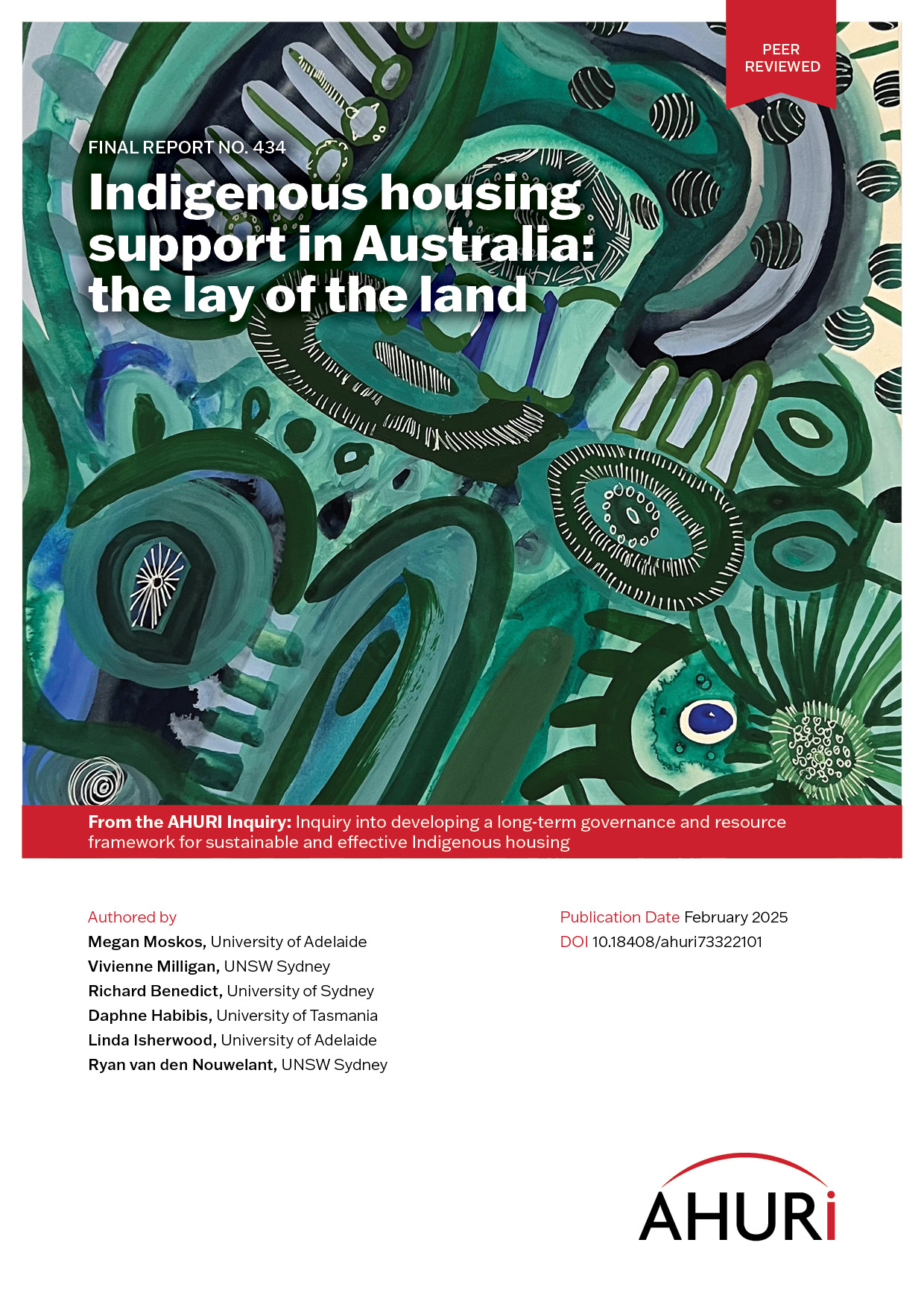
First Nations Housing Crisis: major study reveals huge gap for affordable rental housing
12 Feb 2025
One in eight Aboriginal and Torres Strait Islander households across Australia faced unmet housing needs in 2021, according to groundbreaking AHURI research. The study marks the first comprehensive review of First Nations housing governance, resources and regulation in Australia, and provides an up-to-date assessment of their unmet housing needs.
‘Our research revealed 45,700 low-income Indigenous households had unmet housing needs, representing 13% of all Indigenous households,’ says lead author of the research, Associate Professor Megan Moskos from the University of Adelaide. ‘For comparison, that is almost double the rate for all Australian households, which sits just below 7%.’
Most of the unmet need stems from First Nations households living in unaffordable rental housing (81%), while 14% results from severe overcrowding (mostly in social housing) and 4% from inadequate housing conditions. (Unmet need is measured for households earning in the lowest 40% of income levels.)
Urban and regional New South Wales and Queensland and remote Australia face the greatest challenges. (See location specific messages at the end of this release for more.)
Private rental is too expensive for low income First Nations tenants
The private rental sector is too expensive for First Nations households on very low incomes. A concerning 79% of First Nations households with very low incomes face rental stress, with families particularly affected due to higher rental costs for suitable accommodation.
First Nations social housing needs to grow to meet projected demands
Around one-quarter of First Nations households depend on social housing, compared to roughly 4% of non-Indigenous Australians. First Nations households make up over 30% of new public housing tenancies nationwide.
To meet current and projected needs from low income First Nations households, social housing must grow by nearly 4% annually, adding 3,600 dwellings each year for the next 20 years. This expansion would house 137,000 First Nations households in social housing by 2041.
Targeted First Nations social housing is a key for future policy
‘In some locations mainstream social housing is increasingly supporting larger numbers of Indigenous households,’ says Associate Professor Moskos. ‘While all support is important, this has major implications for the delivery of housing services. Mainstream housing providers don’t always have the capacity to meet the specific needs of Aboriginal and or Torres Strait Islander tenants.’
Under 'Closing the Gap' initiatives, state and territory governments have promised more culturally appropriate housing services. High rates of homelessness, overcrowding and housing affordability stress among First Nations households, along with housing quality and suitability, are key issues to be addressed.
Research will help Australian governments develop best policies
For Australian governments and policy makers, having the best understanding of First Nations housing need—especially the cause, type and geography of unmet need—is crucial to formulating policy responses.
The research, ‘Indigenous housing support in Australia: the lay of the land’, was undertaken for AHURI by researchers from University of Adelaide, UNSW Sydney, University of Sydney and University of Tasmania.

